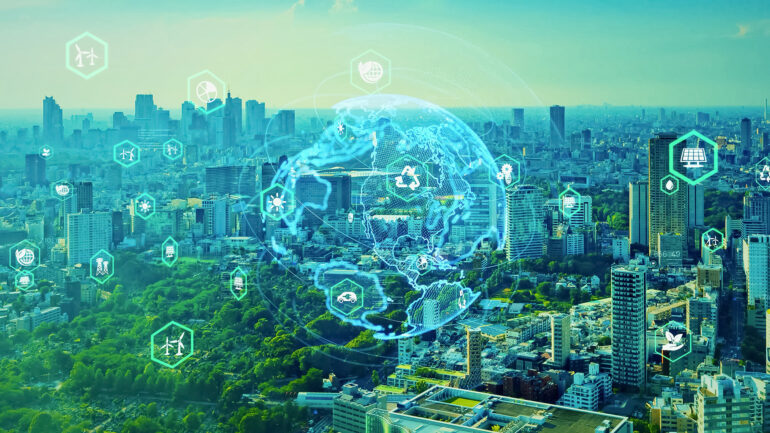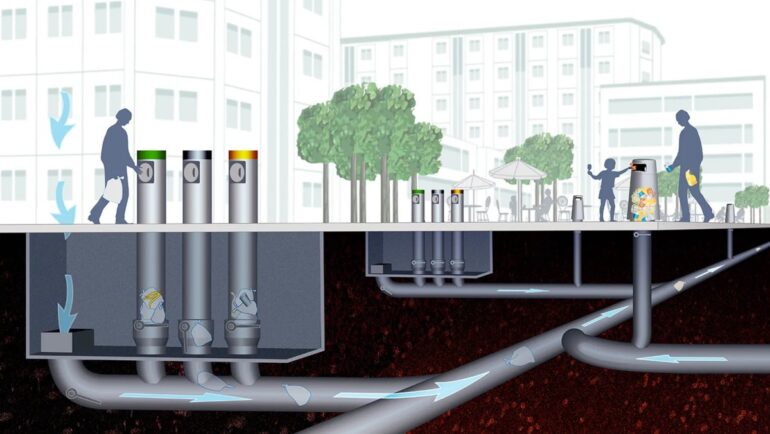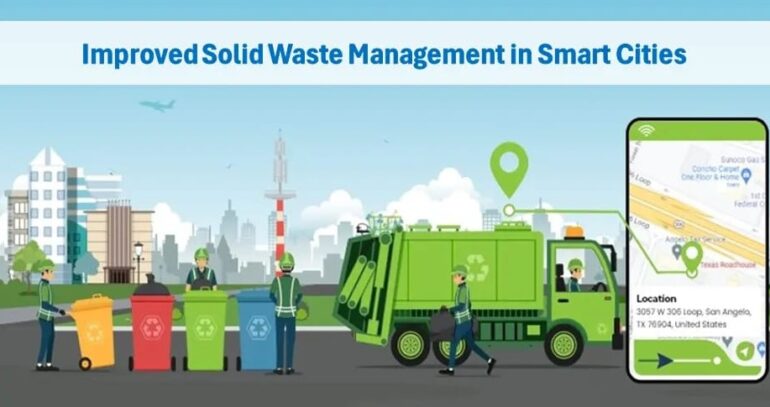Urban waste management isn’t just about collecting trash but about how a city breathes, functions, and sustains itself. As populations swell and consumption increases, garbage piles grow faster than city budgets can handle.
Overflowing bins, landfill expansion, and greenhouse gas emissions show that outdated systems are cracking. Yet technology is giving cities a chance to rethink waste not as a burden, but as a valuable data stream and resource loop.
Smarter systems, built on sensors, analytics, and citizen participation, are redefining how cities stay clean and livable.
Why Cities Need Smarter Waste Systems

Every year, the world generates more than two billion tonnes of waste, and this could nearly double by 2050. Traditional models, which depend on static collection schedules and overfilled landfills, can no longer cope. The problem isn’t just logistics; it’s inefficiency on a massive scale.
In many cities, trucks still follow the same routes regardless of how full the bins are. Fuel is wasted, emissions rise, and recycling potential is lost. Smarter systems fix this through real-time data: sensors in bins send fill-level information to centralized dashboards, and AI software adjusts routes dynamically. The result is cleaner streets, lower costs, and a measurable cut in carbon footprint.
Cities with sensor-based bin monitoring have reported up to 30% savings in fuel and labor costs while reducing overflow incidents by half.
Smart Collection and Metal Recovery
The first step in smart waste management is optimizing collection itself. By integrating digital tools into daily operations, municipalities can shift from routine pickup schedules to demand-driven systems. Sensors detect fullness, temperature, or contamination, alerting operators before problems escalate.
Artificial intelligence then takes over at sorting centers, identifying plastics, paper, glass, and metals faster and with higher accuracy than manual labor. For recyclable metals, regional services like Scrap Metal Bristol help cities process material efficiently and reintroduce it into production chains. This creates local economic loops while conserving natural resources that would otherwise require energy-intensive mining.
Key advantages of this model include:
- Reduced truck mileage and emissions.
- Improved recycling purity through AI classification.
- Stronger local markets for secondary raw materials.
Together, these changes represent a foundational shift, from waste disposal to material recovery.
Underground Systems and Route Optimization

While sensors are becoming the new norm, some cities are moving even further ahead with innovative collection infrastructure. One futuristic approach involves underground vacuum systems that pull waste through sealed pipes straight to collection hubs. These systems eliminate most street bins, prevent odor, and cut diesel truck emissions by up to 90%.
Elsewhere, route optimization powered by algorithms ensures that waste fleets follow the most efficient paths, adapting instantly to road conditions or bin alerts. Electric and hybrid trucks are increasingly used to lower urban noise and pollution.
Subnote: The upfront costs of such systems are high, but when factored against decades of operation, the long-term savings, in energy, maintenance, and emissions, can make them a sustainable investment for dense city centers.
AI Sorting and the Circular Economy
Sorting has always been one of the weakest points in waste management, manual, error-prone, and labor-heavy. Smart facilities are changing that. AI-driven sorting lines now use cameras and sensors to identify items by shape, color, and composition, separating waste with precision that humans can’t match.
| Stage | Traditional Method | Smart Method |
| Sorting | Manual, inconsistent | Automated with machine vision |
| Contamination check | Post-processing | Real-time sensor detection |
| Output quality | Often mixed | Highly purified materials |
The result is more efficient recycling and higher-value recovery. Plastics become new packaging, metals are melted for reuse, and organic waste feeds biogas production. This reinforces the circular economy model, where materials circulate continually rather than being discarded after one use.
AI-based waste classification has increased recycling plant efficiency by up to 40% in pilot projects across Europe.
Human Behavior and Policy: The Missing Link
Technology alone can’t solve the waste crisis. A city’s success depends on how people engage with the system. When residents separate waste properly, use recycling stations, and report issues digitally, efficiency multiplies. That’s why many municipalities invest in mobile apps, gamified recycling programs, and transparent performance dashboards.
Behavioral studies show that people recycle more when they can track progress or receive tangible incentives. Policy also matters; laws that ban single-use plastics or enforce producer responsibility push industries toward circular design. Education, incentives, and accountability turn passive waste collection into active resource management.
In some European cities, “pay-as-you-throw” systems, charging households based on the amount of residual waste, have reduced landfill waste by over 25% in just a few years.
Challenges and Transition Pathways
Implementing smart systems comes with hurdles. Cities face steep initial costs for IoT infrastructure, interoperability issues among vendors, and the need for data protection. Moreover, automation can disrupt traditional waste collection jobs, demanding retraining and new skill sets.
Still, incremental progress works best. Many municipalities begin with pilot districts before scaling citywide. Public–private partnerships help finance innovation, while open data policies ensure transparency.
Typical barriers and solutions include:
- High capital costs: Start small with pilot projects.
- Legacy systems: Integrate rather than replace outright.
- Workforce adaptation: Invest in reskilling for technical roles.
These challenges are not roadblocks but part of the natural evolution toward smarter, more sustainable cities.
Envisioning the Smart, Clean City of Tomorrow

Picture a city where waste is nearly invisible. Trucks run only when needed. Bins report themselves full. Factories rely on recycled raw materials instead of extracting new ones. Citizens track their recycling rates through apps and feel ownership of cleaner neighborhoods.
This vision is no longer utopian; it’s unfolding. Urban waste management is shifting from reactive cleanup to proactive optimization, guided by technology and human cooperation. Smarter systems promise not only cleaner streets but also stronger economies and lower emissions.
Cities that embrace this transformation won’t just manage waste, they’ll redefine what urban efficiency means in the 21st century.
